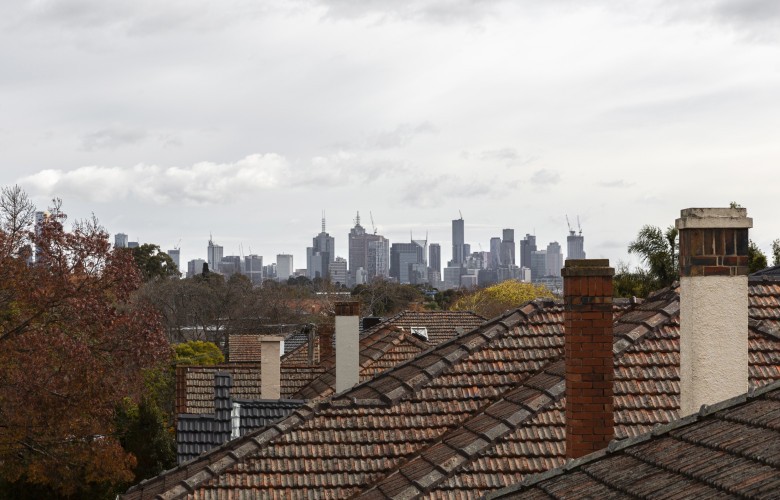John McGrath – Financial Year Wrap & Key Trends Ahead
Contact
John McGrath – Financial Year Wrap & Key Trends Ahead
John McGrath founder and executive director of McGrath Estate Agents, reviews the market over the past year and what trends to expect in FY22.
Well, we’ve never had a year quite like this one.
At the start of FY21, we were four months into a global pandemic that created uncertainty and fear around the world. Alongside the terrible health threat was the economic threat, which carried with it plenty of doomsday predictions for the Australian property market.
Remarkably, we have lived up to our ‘lucky country’ reputation. We appear to be through the worst of it thanks to exceptional management (on the whole) and the advantage of being an island nation that can more effectively isolate itself from a global virus.
During the first six months of COVID, the No 1 factor keeping the property market stable was massive government stimulus, including wage replacement through JobKeeper and the boosted JobSeeker, optional deferral of mortgage repayments and rental moratoriums.
No 2 was a lack of stock for sale due to job insecurity and lockdowns. No 3 was ongoing high demand from first home buyers, who were incentivised by further falls in home loan rates and state initiatives like raised price thresholds for stamp duty exemptions and concessions.
Later on, the market benefitted from HomeBuilder and increasing consumer confidence due to improving government management of outbreaks and talk of a vaccine by Christmas.
People began feeling motivated to trade up because of the lifestyle changes COVID inspired, as well as rock bottom home loan rates including fixed deals under 2%.
Soon enough, the market was flooded with demand and prices rose strongly. In regional areas, this occurred all year long but in the major cities, price growth didn’t really take off until CY21.
Here are the official FY21 property price growth numbers from CoreLogic.
East Coast house price growth FY21
COVID created greater demand for houses due to the trend in upgrading for more space to accommodate home offices; the decentralisation from inner cities to cheaper outlying areas; and the great regional relocation – three trends that are still underway nationwide.
- Sydney up 19.3% to a median $1,224,613
- Regional NSW up 21.9% to a median $609,640
- Melbourne up 8.9% to a median $929,769
- Regional Victoria up 15.6% to a median $514,668
- Brisbane up 14.8% to a median $657,551
- Regional Queensland up 17.8% to a median $458,839
- Canberra up 20.7% to a median $877,311
East Coast apartment price growth FY21
Apartment price growth wasn’t as impressive due to the exodus of international student renters and ceased migration, which hit the Sydney and Melbourne inner rings hardest. However, strong demand from first home buyers and downsizers was enough to keep the overall median prices rising.
- Sydney up 5.1% to a median $794,193
- Regional NSW up 16.1% to a median $495,329
- Melbourne up 4.7% to a median $610,043
- Regional Victoria up 18.1% to a median $358,086
- Brisbane up 5.7% to a median $415,536
- Regional Queensland up 14.5% to a median $425,528
- Canberra up 8.7% to a median $501,754
Strong home price growth is happening all over the world because every country has one thing in common – the lowest interest rates of our lives. That’s a big incentive to trade up.
The other common factor is those COVID-induced lifestyle changes I mentioned earlier. They are the sole reason why many people have moved or are looking to move house.
Without COVID, a huge proportion of demand in the market today simply wouldn’t be there.
COVID created new motivation to trade homes but many owners have held back from listing, either due to uncertainty or a desire to maximise their sale price by waiting.
If there were as many homes for sale as there were buyers in FY21, sales volumes would have been off the charts (and price growth more subdued) across Australia.
Here are some trends I expect to see in FY22:
- More owners will list their homes to take advantage of strong boom prices
- More people will work from home permanently and relocate as a result
- The return of (some) workers to CBDs will boost demand for city rentals and homes
- Expats will continue to return home in FY22, at least partly offsetting no migration
- Sydney and Melbourne inner city apartments will offer the best value
Affordability constraints will likely slow the pace of price growth in Sydney, Melbourne and Canberra at some point in FY22. However, smaller capital cities and key regional markets that are growing from a much lower price base are likely to perform strongly again this year.
The views expressed in this article are an opinion only and readers should rely on their independent advice in relation to such matters.
For more information including articles, checklists, guides and more visit McGrath’s Insights Centre.
Similar to this:
John McGrath – Suburbs flying under the radar
John McGrath – A million dollar median has created wealth for many homeowners
John McGrath – Buy the bridesmaid suburbs for value and growth





